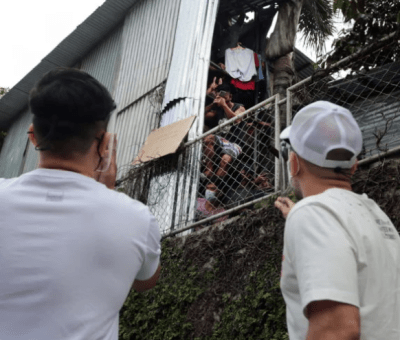Malacañang on Thursday said the government would be doing away with general lockdowns as the country accelerates its mass vaccination program and with fewer vaccinated Filipinos getting hospitalized or dying from severe COVID-19.
Presidential spokesperson Harry Roque said in a briefing that the Inter-Agency Task Force for the Management of Emerging Infections Diseases (IATF) has decided that community quarantines encompassing entire regions, provinces, cities and municipalities should now give way to granular lockdowns.
“Let us await the pronouncements of the IATF. We are moving toward that direction already because the local government units (LGUs) are really the ones that know where the areas [of infection] are. It has been approved as a principle but there are no approved details yet,” Roque said.
He said the IATF would also consider proposals on the reopening of more business establishments to the public, but with different rules for vaccinated and unvaccinated people.
Roque said in areas such as Metro Manila where nearly a majority of residents eligible to receive jabs were fully vaccinated, the health-care system appeared to be coping.
Proof
He said that despite Metro Manila’s health care utilization rate at a high risk level of 72-73 percent, hospitals were not getting overwhelmed despite the rising number of cases.
“That’s proof the vaccines work,” he said.
Speaking at the televised Laging Handa public briefing, Department of the Interior and Local Government (DILG) Undersecretary for Operations Epimaco Densing III said local governments were being asked to prepare for the policy shift on lockdowns in anticipation of its approval by the IATF.
“We will let the local governments, our governor and mayors to declare granular lockdowns so that we will be sure that there will be no movement of the people or there will be less mobility [among those] people. We will help our LGUs in providing the needs, such as food, of the people placed under granular lockdowns,” Densing said.
The recommendation to do away with general lockdowns came from the IATF sub-technical working group on data analytics, which included the DILG.
While previous region-wide and province-wide lockdowns under the enhanced community quarantine (ECQ) category did work to stop surges, Densing said recent versions of the ECQ allowed for more mobility among authorized persons outside of residence (Apors).
More quarantine facilities
“In the ECQs nowadays, there are lots of Apors who can go out even if there is a lockdown, so there is still mobility, and the possibility of spreading the disease,” he said.
He added that the national government would still retain the power to impose ECQs and general lockdowns but only as a “last resort.”
Meanwhile, Densing said Metro Manila and the Central Luzon, Calabarzon and Central Visayas regions were experiencing shortages in quarantine facilities and the DILG was helping them identify more public facilities that could be used as temporary treatment and monitoring facilities.
He said more public schools and public buildings were being considered as quarantine facilities.
Densing said local governments should also revise their existing ordinances by imposing tougher penalties to make people comply with minimum public health protocols.
The DILG official said the number of contact tracers—currently between 20,000 and 25,000 in Metro Manila and 107,000 nationwide—would also have to be increased to shorten the interval between case detection and isolation.
Source: https://newsinfo.inquirer.net/?p=1479520#ixzz74iuNv6PV

